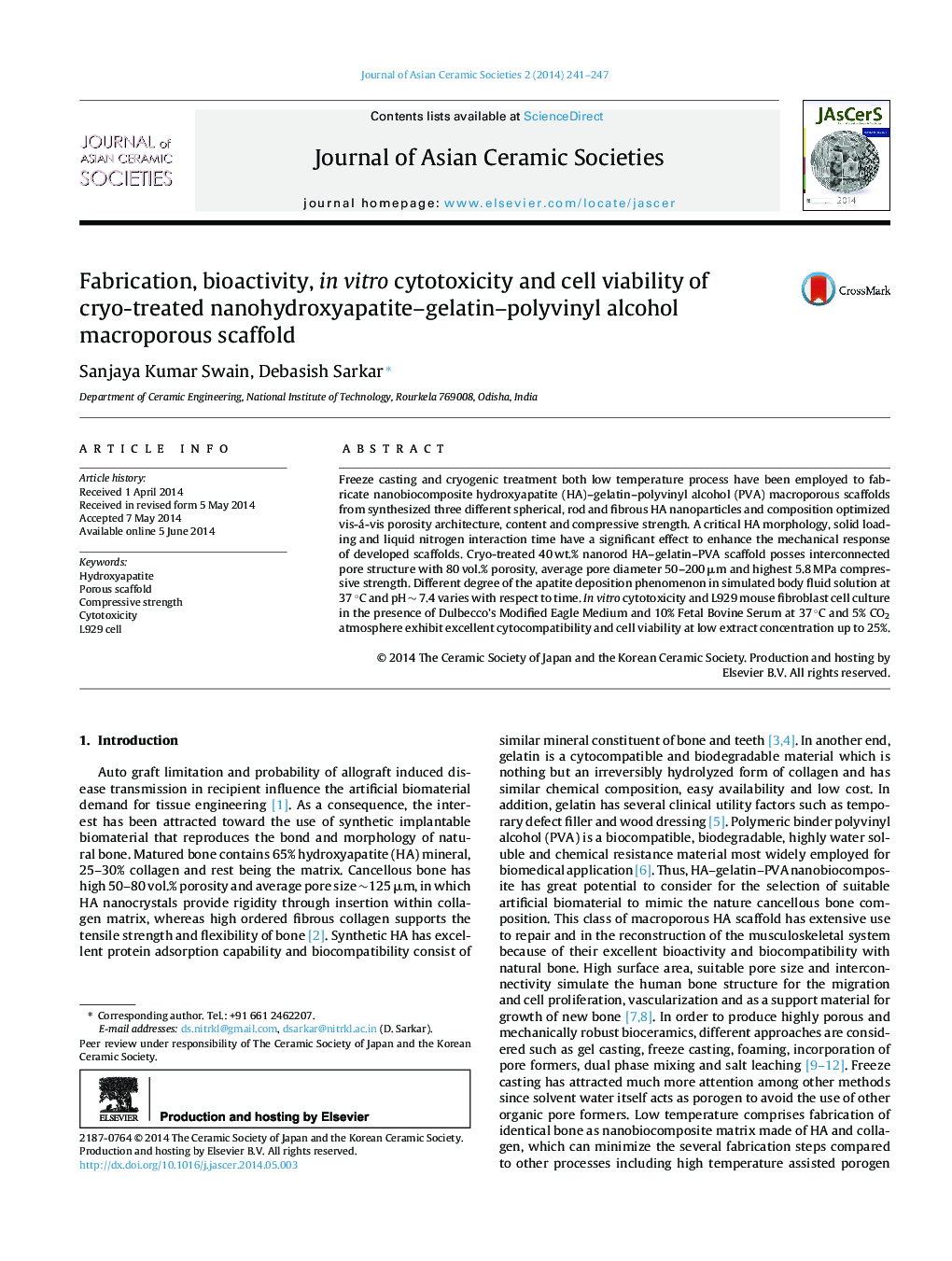| Article ID | Journal | Published Year | Pages | File Type |
|---|---|---|---|---|
| 1473180 | Journal of Asian Ceramic Societies | 2014 | 7 Pages |
Freeze casting and cryogenic treatment both low temperature process have been employed to fabricate nanobiocomposite hydroxyapatite (HA)–gelatin–polyvinyl alcohol (PVA) macroporous scaffolds from synthesized three different spherical, rod and fibrous HA nanoparticles and composition optimized vis-á-vis porosity architecture, content and compressive strength. A critical HA morphology, solid loading and liquid nitrogen interaction time have a significant effect to enhance the mechanical response of developed scaffolds. Cryo-treated 40 wt.% nanorod HA–gelatin–PVA scaffold posses interconnected pore structure with 80 vol.% porosity, average pore diameter 50–200 μm and highest 5.8 MPa compressive strength. Different degree of the apatite deposition phenomenon in simulated body fluid solution at 37 °C and pH ∼ 7.4 varies with respect to time. In vitro cytotoxicity and L929 mouse fibroblast cell culture in the presence of Dulbecco's Modified Eagle Medium and 10% Fetal Bovine Serum at 37 °C and 5% CO2 atmosphere exhibit excellent cytocompatibility and cell viability at low extract concentration up to 25%.
